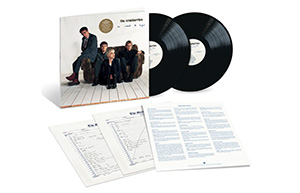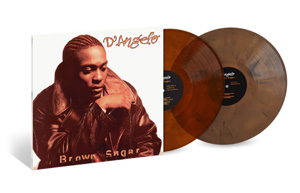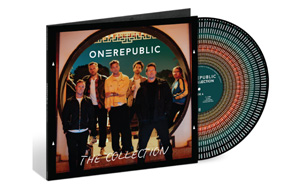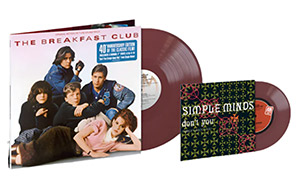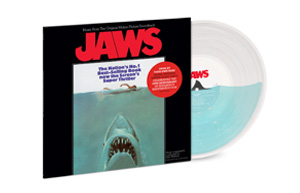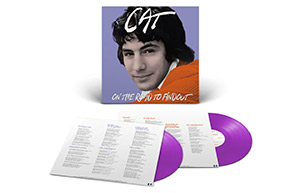Glastonbury Festival


Glastonbury Festival is the largest greenfield music and performing arts festival in the world. When you arrive you enter a huge tented city, a mini-state under canvas. British law still applies, but the rules of society are a bit different, a little bit freer. Everyone is there to have a wild time in their own way.
The first festival at Worthy Farm was the Pop, Blues & Folk Festival, hosted by Michael Eavis on Saturday 19 September 1970, (the day after Jimi Hendrix died), and was attended by around 1,500 people. There had been a commercial UK festival tradition which included the National Jazz and Blues Festival and the Isle of Wight Festival. Eavis decided to host the first festival after seeing an open-air concert headlined by Led Zeppelin at the 1970 Bath Festival of Blues and Progressive Music at the nearby Bath and West Showground in 1970.
The original headline acts at the 1970 festival were The Kinks and Wayne Fontana and the Mindbenders but were replaced at short notice by Tyrannosaurus Rex, Steamhammer, Quintessence, Stackridge, Al Stewart, Pink Fairies and Keith Christmas. Tickets were £1. The soon-to-be glam rock superstar Marc Bolan arrived in a Cadillac so wide it could barely squeeze down the lane leading to the festival site. Michael Eavis later stated it was “one of the most memorable slots ever at the festival”.
The event was renamed the Glastonbury Free Festival in 1971 – the same year the first of its three famous Pyramid Stages was constructed. Conceived by Bill Harkin the stage was a one-tenth replica of the Great Pyramid of Giza built from scaffolding and metal sheeting and positioned over a “blind spring”, a term used to describe a hypothetical underground body of water in the pseudoscientific practice of dowsing. Performers included Family, David Bowie, Traffic, Fairport Convention, Gong, Hawkwind, Pink Fairies, The Worthy Farm Windfuckers and Melanie.
The 1980s saw the festival become an annual fixture, barring periodic fallow years. In 1981, Michael Eavis took back sole control of the festival, organised in conjunction with the Campaign for Nuclear Disarmament (CND). That year a new Pyramid Stage was constructed from telegraph poles and metal sheeting (repurposed from materials of the Ministry of Defence), a permanent structure which doubled as a hay barn and cowshed during the winter.
1981 was the first year that the festival made profits, and Eavis donated £20,000 of them to CND. In the following years, donations were made to a number of organisations, including Oxfam, Greenpeace and WaterAid, who all contribute towards the festival by providing features and volunteers, who work at the festival in exchange for free entry.
In 1985, the festival grew too large for Worthy Farm, so neighbouring Cockmill Farm was purchased. That year saw a wet festival with considerable rain; Worthy Farm is a dairy farm, and what washed down into the low areas was a mixture of mud and liquefied cow dung. This did not prevent festival-goers from enjoying the knee-deep slurry in front of the Pyramid Stage.
In 1994, the Pyramid Stage burned down just over a week before the festival; a temporary main stage was erected in time for the festival. Headliners Levellers set a record when they played to a crowd of as many as 300,000 people on their Friday performance, Glastonbury’s biggest ever crowd as of 2010.
The festival was first televised live in 1994 by Channel 4; the coverage concentrated on the main two music stages and providing a glimpse of the festival for those who knew little of it. The TV broadcast was a crucial factor in ensuring that Orbital’s performance at the festival achieved legendary status. As a result, living rooms across the country were able to experience what a rave might look like, and suddenly dance music did not seem so dangerous and which would be a turning point for the music at Glastonbury.
1995 saw the attendance rise drastically due to the security fence being breached on the Friday of the festival. Estimates suggest there may have been enough fence-jumpers to double the size of the festival. 1995 proved to be a highly successful year with memorable performances from Oasis, Pulp, PJ Harvey, Jeff Buckley, Jamiroquai and The Cure. This was also the first year of the festival having a dance tent to cater for the rising popularity of dance music.
The festival returned in 1997. This time there was major sponsorship from The Guardian and the BBC, who had taken over televising the event from Channel 4. This was also the year of the mud, with the site suffering severe rainfalls which turned the entire site into a muddy bog. Radiohead‘s headlining Pyramid Stage set on the Saturday which is said to be one of the greatest ever Glastonbury performances.
In 2002, the festival returned after its planned fallow year, with the controversial Mean Fiddler now handling the logistics and security – especially installing a substantial surrounding fence (dubbed the “superfence”) that reduced numbers to the levels of a decade earlier. 2002 also saw Coldplay headline the Pyramid Stage for the first time while the show was closed by a set from Rod Stewart on the Sunday night.
In 2004, tickets sold out within 24 hours amid much controversy over the ticket ordering process, which left potential festival goers trying for hours to connect to the overloaded telephone and internet sites. The website had two million attempted connections within the first five minutes of the tickets going on sale and an average of 2,500 people on the phone lines every minute.
In 2005 the 112,500 ticket quota sold out in 3 hours 20 minutes. For 2005, the enclosed area of the festival was over 900 acres, had over 385 live performances and was attended by over 150,000 people. The opening day of the 2005 festival was delayed by heavy rain and thunderstorms: Several stages, including the Acoustic Tent (and one of the bars), were struck by lightning, and the valley was hit with flash floods that left some areas of the site under more than four feet of water.
Glastonbury 2007 was headlined by Arctic Monkeys, The Killers, and The Who on Friday, Saturday and Sunday, respectively. Over 700 acts played on more than 80 stages and the capacity expanded by 20,000 to 177,000.
2008 saw the introduction of a new field adjacent to the Sacred space and Park Stage. Not named by the organisers, the festival goers themselves called it “Flagtopia” in reference to the flags located there.
The Glastonbury Festival 2010 took place between 23 and 28 June. On the last night, Michael Eavis appeared on the main stage with headline artist Stevie Wonder to sing the chorus of the latter’s “Happy Birthday”, marking the festival’s 40th year.
The 2020 and 2021 festivals were cancelled because of the COVID-19 pandemic. The event returned in June 2022. Billie Eilish headlined the Friday night, making her the youngest Glastonbury headline act to date. Paul McCartney and Kendrick Lamar were headline acts for Saturday night (with Noel Gallagher‘s High Flying Birds) and Sunday night respectively.
Tickets for Glastonbury 2023 sold out in one hour. Elton John, (which he billed as his last ever UK performance), Guns N’ Roses and Arctic Monkeys were announced as the headliners at the Pyramid Stage for Glastonbury 2023.
The Pyramid Stage is 25 metres tall. The stage has 292 audio speakers. There are 8.5 km of cables for video and audio. On stage there are 354 microphones and 3743 light bulbs. The sound systems on site have a total power of 650,000 watts, with the main stage having 250 speakers.
Glastonbury headliners:
1970: T. Rex
1971: Hawkwind, Traffic, Melanie
1978: The Pirates, Pete Townshend
1979: Tim Blake, Steve Hillage
1981: Hawkwind, Ginger Baker, New Order
1982: Van Morrison, Jackson Browne, Roy Harper
1983: UB40, Marillion, The Beat
1984: The Smiths, Black Uhuru, Elvis Costello
1985: Echo & the Bunnymen, Aswad, Joe Cocker
1986: The Cure, Simply Red, The Housemartins
1987: Elvis Costello, Van Morrison, The Communards
1989: The Wonder Stuff, Elvis Costello, Pixies, Suzanne Vega
1990: The Cure, Sinead O’Connor, Happy Mondays
1992: Carter USM, Shakespears Sister, The Shamen
1993: The Orb, Lenny Kravitz, Velvet Underground
1994: The Levellers, Peter Gabriel, The Pretenders
1995: Oasis, The Cure, Pulp
1997: Radiohead, The Prodigy, Ash
1998: Primal Scream, Blur, Massive Attack
1999: R.E.M., Manic Street Preachers, Skunk Anansie
2000: David Bowie, Travis, The Chemical Brothers
2002: Coldplay, Rod Stewart, Stereophonics
2003: R.E.M., Radiohead, Moby
2004: Oasis, Paul McCartney, Muse
2005: Coldplay, The White Stripes, Basement Jaxx
2007: Arctic Monkeys, The Killers, The Who
2008: Kings of Leon, Jay-Z, The Verve
2009: Neil Young, Bruce Springsteen, Blur
2010: Stevie Wonder, Gorillaz, Muse
2011: U2, Coldplay, Beyoncé
2013: Arctic Monkeys, The Rolling Stones, Mumford & Sons
2014: Metallica, Arcade Fire, Kasabian
2015: The Who, Florence and the Machine, Kanye West
2016: Adele, Coldplay, Muse
2017: Radiohead, Foo Fighters, Ed Sheeran
2019: The Cure, Stormzy, The Killers
2022: Paul McCartney, Billie Eilish, Kendrick Lamar
2023: Guns N’ Roses, Elton John, Arctic Monkeys
2024: Coldplay, Dua Lipa, SZA
2025: Neil Young, Rod Stewart, Olivia Rodrigo, 1975










